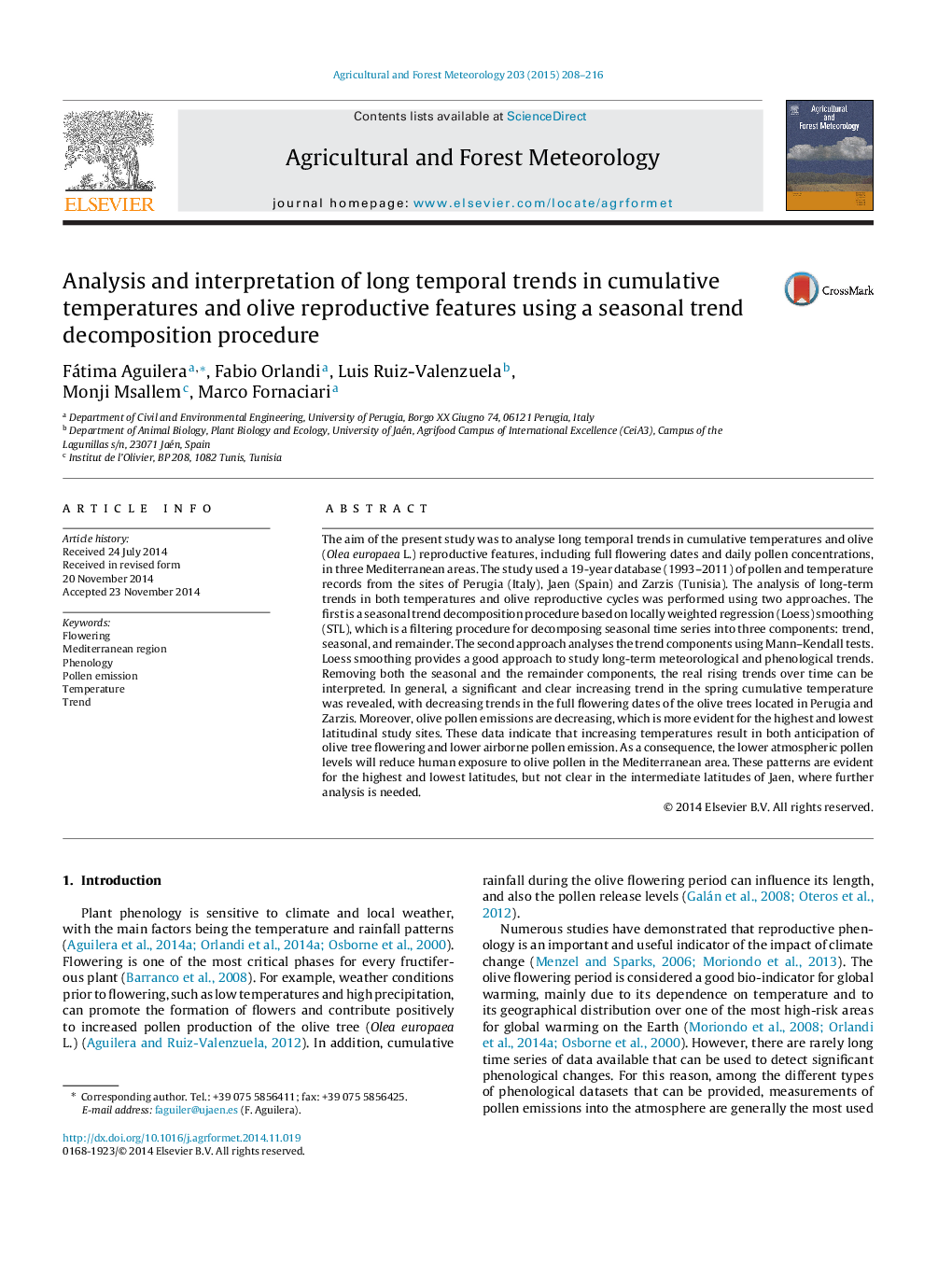| کد مقاله | کد نشریه | سال انتشار | مقاله انگلیسی | نسخه تمام متن |
|---|---|---|---|---|
| 6537377 | 158331 | 2015 | 9 صفحه PDF | دانلود رایگان |
عنوان انگلیسی مقاله ISI
Analysis and interpretation of long temporal trends in cumulative temperatures and olive reproductive features using a seasonal trend decomposition procedure
ترجمه فارسی عنوان
تجزیه و تحلیل و تفسیر گرایش های طولانی مدت در دماهای تجمعی و ویژگی های باروری زیتون با استفاده از روش تجزیه روند فصلی
دانلود مقاله + سفارش ترجمه
دانلود مقاله ISI انگلیسی
رایگان برای ایرانیان
کلمات کلیدی
گل زدن، منطقه مدیترانه، فنولوژی، انتشار گرده، درجه حرارت، روند،
موضوعات مرتبط
مهندسی و علوم پایه
علوم زمین و سیارات
علم هواشناسی
چکیده انگلیسی
The aim of the present study was to analyse long temporal trends in cumulative temperatures and olive (Olea europaea L.) reproductive features, including full flowering dates and daily pollen concentrations, in three Mediterranean areas. The study used a 19-year database (1993-2011) of pollen and temperature records from the sites of Perugia (Italy), Jaen (Spain) and Zarzis (Tunisia). The analysis of long-term trends in both temperatures and olive reproductive cycles was performed using two approaches. The first is a seasonal trend decomposition procedure based on locally weighted regression (Loess) smoothing (STL), which is a filtering procedure for decomposing seasonal time series into three components: trend, seasonal, and remainder. The second approach analyses the trend components using Mann-Kendall tests. Loess smoothing provides a good approach to study long-term meteorological and phenological trends. Removing both the seasonal and the remainder components, the real rising trends over time can be interpreted. In general, a significant and clear increasing trend in the spring cumulative temperature was revealed, with decreasing trends in the full flowering dates of the olive trees located in Perugia and Zarzis. Moreover, olive pollen emissions are decreasing, which is more evident for the highest and lowest latitudinal study sites. These data indicate that increasing temperatures result in both anticipation of olive tree flowering and lower airborne pollen emission. As a consequence, the lower atmospheric pollen levels will reduce human exposure to olive pollen in the Mediterranean area. These patterns are evident for the highest and lowest latitudes, but not clear in the intermediate latitudes of Jaen, where further analysis is needed.
ناشر
Database: Elsevier - ScienceDirect (ساینس دایرکت)
Journal: Agricultural and Forest Meteorology - Volume 203, 15 April 2015, Pages 208-216
Journal: Agricultural and Forest Meteorology - Volume 203, 15 April 2015, Pages 208-216
نویسندگان
Fátima Aguilera, Fabio Orlandi, Luis Ruiz-Valenzuela, Monji Msallem, Marco Fornaciari,
